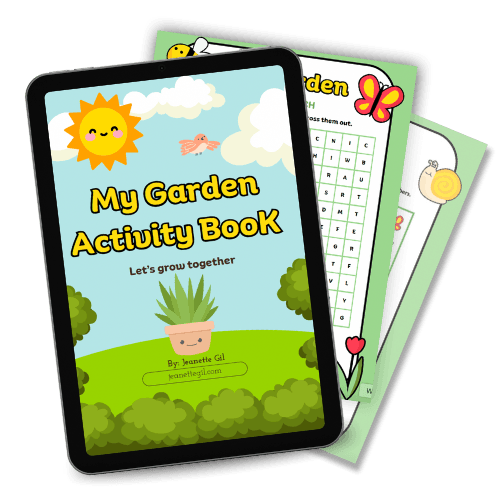The Healing Power of Stories: How Storytelling Can Nurture Empathy in Children
Stories have an extraordinary ability to heal, inspire, and shape the way we perceive the world.
Stories have an extraordinary ability to heal, inspire, and shape the way we perceive the world. For children, stories are far more than just entertainment—they are a gateway to understanding emotions, building empathy, and learning how to care for others. Through storytelling, children are given the chance to explore different perspectives, navigate complex feelings, and gain a deeper understanding of themselves and the world around them.
As an author, I’ve witnessed firsthand the transformative power of stories. Whether in a classroom, around the dinner table, or curled up with a book, stories have the potential to spark conversations that change the way children interact with the world.
Why Storytelling Is Important for Emotional Growth
At its core, storytelling is about connection. When children hear stories, they are not just learning about the events or characters—they are experiencing the emotions of those characters and learning how to navigate their own feelings. In books, children can find characters that reflect their own experiences, struggles, and dreams. These stories become mirrors, helping children understand that they are not alone in what they feel. More importantly, they offer windows, giving children the opportunity to walk in the shoes of others, fostering a sense of empathy that they can carry with them throughout their lives.
In my own work, I strive to create stories that speak to the hearts of young readers, teaching them valuable lessons about kindness, resilience, and self-care.
For example, in Aloe Vera’s Special Gift, the main character—a little aloe plant—learns that caring for herself and others is essential for healing. As the plant grows and learns to nurture the world around her, children are encouraged to think about their own ability to make a difference in the lives of others, no matter how small they may feel.

How Stories Build Empathy
When children read stories where characters face challenges or navigate difficult emotions, they gain the ability to see the world through different lenses. This is how empathy begins to blossom. Children learn to recognize feelings like sadness, joy, and fear, not only in themselves but in others. They begin to understand that everyone experiences emotions and that their actions can have a profound impact on the feelings of others.
For instance, in Aloe Vera’s Special Gift, the aloe plant helps a sunbathing lizard when it is in need, which teaches young readers the power of kindness and compassion. By learning how to help others, children grasp the value of selflessness and how empathy makes us stronger and more connected.
As children grow older, these early lessons in empathy, learned through stories, serve as the foundation for building deeper, more meaningful relationships with others. It helps them form emotional connections not just with their family or friends, but with the world around them.
Practical Tips for Parents and Educators
Parents and educators play an important role in nurturing empathy through storytelling. Here are a few practical tips on how to use books as a tool for emotional development:
Discuss the Characters' Feelings: After reading a story, ask children how they think the characters are feeling. Encourage them to describe emotions in their own words. This helps children identify and articulate their feelings.
Use Diverse Stories: Choose books that showcase a wide range of experiences and backgrounds. This helps children develop empathy for others who may not share their exact circumstances, encouraging a more inclusive worldview.
Encourage Imagination: Ask children how they would feel or react in the characters’ situations. Let them imagine themselves in different scenarios, which fosters the ability to empathize with people who have different life experiences.
Model Empathy: Share your own stories about times when you’ve helped someone or when you needed help. Showing that you value empathy encourages children to do the same.
Create Empathy-Rich Environments: Incorporate empathy-building activities, such as kindness projects, volunteering, or group discussions, to help children put what they’ve learned into action.
Storytelling is an incredibly powerful tool for teaching empathy, and as we continue to share stories with children, we are planting seeds of kindness, understanding, and emotional growth that will grow with them for years to come. The stories we read today can shape the world our children will create tomorrow, one act of empathy at a time.
Let’s continue to nurture these values with every book we read, every story we share, and every lesson we teach. The world needs more empathetic, compassionate hearts, and it all starts with the stories we tell.
Meet Jeanette!

Hi, I’m Jeanette, a children’s author who loves writing stories that inspire kindness, growth, and empathy. My books are all about helping kids understand the importance of resilience, self-care, and the beauty of connecting with others. I write stories that celebrate culture, family, and the special bonds that shape us, and I’m so excited to share these with young readers everywhere.
FREE My Garden Activity Book

Spark creativity and connection with this fun, garden-themed printable!
By signing up, you are agreeing to receive occasional emails from Jeanette Gil with updates, resources, and inspiration. You can unsubscribe at any time. You also agree to our Terms & Conditions and Privacy Policy
SHARE THIS POST
share
YOUR COMMENTS
fresh
OFF THE BLOG
Newsletter
Subscribe to my newsletter to stay in the loop! you can opt-out anytime, hassle-free.
By signing up, you are agreeing to receive occasional emails from Jeanette Gil with updates, resources, and inspiration. You can unsubscribe at any time. You also agree to my website Terms & Conditions and Privacy Policy.
Copyright 2025, Jeanette Gil | All rights reserved



